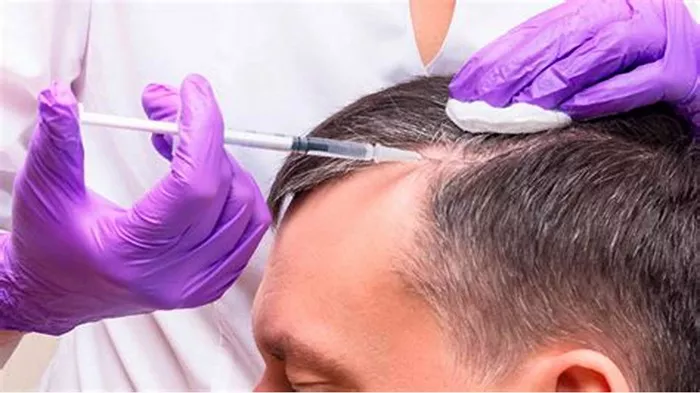Hair transplantation is a significant step towards regaining confidence and restoring a natural hairline. Understanding what happens after 7 days of a hair transplant is crucial for ensuring optimal healing and successful results. This article delves into the intricacies of the recovery process during this critical period.
Initial Recovery Phase
The first week post-hair transplant marks a crucial phase in your journey towards fuller, natural-looking hair. By day 7, you are likely to experience a blend of anticipation and curiosity about the progress of your transplant. Here’s a detailed look at what typically unfolds during this period:
Scab Formation and Care:
Scab Formation: By day 7, the transplanted area will likely have formed small scabs over the grafts. These scabs are a natural part of the healing process and protect the newly implanted follicles.
Care Instructions: It’s essential to follow your surgeon’s instructions diligently regarding scab care. Gentle washing with mild shampoo and avoiding any scratching or picking of scabs are crucial to prevent dislodging grafts prematurely.
Redness and Swelling:
Redness Reduction: Many patients notice a reduction in redness around the recipient area by the end of the first week. This is a positive sign that the healing process is progressing well.
Swelling Resolution: Any residual swelling in the scalp typically subsides significantly by day 7. Elevating your head while sleeping and applying cold compresses as advised can aid in reducing swelling faster.
Shedding of Transplanted Hairs:
Expected Shedding: It’s common for the transplanted hairs to shed within 2-4 weeks post-surgery. This shedding is a natural part of the hair growth cycle and does not indicate a failed transplant.
New Growth Timeline: Despite the shedding, the follicles remain intact beneath the scalp and will gradually begin new growth in the following months.
See also: How Long to Take Medicine After Hair Transplant?
Post-Operative Care and Activities
Beyond the immediate recovery milestones, post-operative care plays a pivotal role in ensuring the longevity and success of your hair transplant. Here’s what to expect and how to manage your routine after 7 days:
Resuming Normal Activities:
Work and Physical Activity: By day 7, most patients can resume non-strenuous activities and return to work if their job does not involve heavy lifting or strenuous physical exertion.
Exercise: Light exercises like walking are generally permissible, but activities that cause excessive sweating or increase blood pressure should be avoided to prevent complications.
Medication and Follow-Up Visits:
Prescribed Medications: Your surgeon may prescribe antibiotics or pain relievers during the first week. It’s crucial to complete the full course as directed to prevent infection and manage discomfort.
Follow-Up Visits: Scheduled follow-up appointments allow your surgeon to monitor your progress, remove any remaining sutures, and address any concerns you may have.
Hair Care Routine:
Shampooing: You may be advised to start gentle shampooing of the donor and recipient areas after a few days. Using a mild, pH-balanced shampoo and following your surgeon’s instructions on washing frequency are essential.
Avoiding Irritants: Steer clear of harsh hair products, styling tools that generate heat, and direct sunlight exposure to protect the sensitive scalp during the early recovery phase.
Emotional and Psychological Aspects
The emotional journey following a hair transplant can be as significant as the physical recovery. By day 7, many patients begin to envision the eventual outcome of their procedure, which can evoke a range of emotions:
Patience and Expectations:
Managing Expectations: Understand that visible results take time to manifest. Patience is key as you wait for the transplanted follicles to grow and blend seamlessly with your existing hair.
Support System: Lean on friends, family, or support groups who can provide encouragement and understanding during the recovery period.
Self-Esteem Boost:
Early Confidence: Even in the early stages, many patients report a boost in self-esteem as they see the initial signs of regrowth. This positive shift can enhance overall well-being and confidence in social interactions.
Long-Term Outlook and Growth Timeline
Looking beyond the first week, it’s essential to have realistic expectations about the growth timeline and final results of your hair transplant:
Growth Phases:
Initial Growth: New hair growth typically begins to emerge within 3-4 months post-surgery. Initially, the hair may appear thin and sparse, gradually thickening over time.
Full Results: Final results are usually visible around 12-18 months after the procedure, as the transplanted hairs mature and blend seamlessly with your natural hair.
Maintenance and Styling:
Styling Tips: Consult with your surgeon or a hairstyling expert on how to style and care for your new hair as it grows. Proper maintenance can prolong the longevity of your results.
Conclusion
Recovery after 7 days of a hair transplant sets the stage for the months ahead, where patience, care, and adherence to post-operative instructions are paramount. Each milestone, from the shedding phase to the emergence of new growth, contributes to the eventual success of your procedure. By understanding what to expect and maintaining a positive outlook, you can navigate the recovery journey with confidence and anticipation for your new, natural-looking hair.
You May Be Interested In

